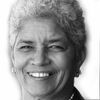
When it comes to poverty, not much has changed in the last 25 years. But neighborhood revitalization provides a viable solution to the cycle of despair making a nightmare of the American dream.
"Things are qualitatively similar to ... when I wrote The Truly Disadvantaged [in 1987]," said William Julius Wilson, director of the Joblessness and Urban Poverty Research Program at the Malcolm Wiener Center for Social Policy at Harvard Kennedy School, in the Harvard Gazette. Wilson's book, The Truly Disadvantaged, which shifted the national conversation about the causes of urban poverty and how to fix it, was commemorated and analyzed by a recent gathering of scholars at Harvard.
One significant change is that neighborhood revitalization can provide a path out of poverty, Wilson stated.
That revitalization -- especially when it creates mixed-income communities in place of concentrated poverty -- is essential to substantive change.
Consider: Recent Census reports say those classified by the government as poor remained at record highs in 2011, while the gap between the rich and everyone else widened further.
Every 29 seconds another child is born into poverty, costing our country some $500 billion per year -- 4 percent of GDP -- stated Shaun Donovan, Secretary of the U.S. Department of Housing and Urban Development. Calculate that in terms of lost productivity, health disparities and increased crime, and the sum is staggering. Throughout the recent presidential race, this national crisis hovered over the candidates' speeches, debates and sound bites about saving the middle class.
A disproportionate number of children living in poverty are black or Latino. Few can read or compute at grade level, yet they'll be the majority of our youth population by 2019, and tomorrow's workforce. By the end of fourth grade, poor students of all races trail two years behind their wealthier, predominantly white peers in reading and math. By eighth grade the gap is three years. By 12th grade it's four years. They're less likely to graduate from high school and more likely to go to prison. Most will carry the culture of poverty into future generations.
It's not as if civic leaders don't know or care. For years community residents and elected officials have tried solutions to this nightmare.
Years ago I, like others, wondered what would become of Atlanta's most violent neighborhood, East Lake Meadows housing project. Poverty prevailed, educational progress was stunted and crime -- at 18 times the national average -- was the city's worst.
One man looked at East Lake Meadows and was inspired. In 1995 local developer and philanthropist Tom Cousins partnered with resident leader and Atlanta Housing Authority President Eva Davis and CEO Renée Glover and local business leaders to try something new: a holistic approach to breaking the cycle of poverty.
Centering their efforts on mixed-income housing, high-quality cradle-to-college education and supportive programs within a defined neighborhood, Cousins, Glover and Davis were determined to offer residents the opportunity to thrive. Cousins formed the nonprofit East Lake Foundation to lead and coordinate the effort.
Today a community that had 1,400 very low-income residents, more than half on welfare, now boasts 2,100 mixed-income residents, nearly all of whom are employed.
Some 650 housing units, 40 percent of which were unlivable, were demolished and replaced with 542 beautiful apartment homes. Though identical, half are subsidized and half are market-rate, making neighbors of former strangers.
The local school, where only 5 percent of neighborhood fifth graders met state math standards in 1996, is now Charles R. Drew Charter School, where student performance tops city and state averages in every subject at all grade levels. At Drew 99 percent of third to eighth graders meet or exceed state standards in reading, and 95 percent in math. Drew was recently named Charter School of the Year by the Georgia Charter Schools Association and awarded a Race to the Top innovation grant, and it plans to expand to the 12th grade.
Community services and programs boost the quality of life. The East Lake YMCA, which has the third highest membership of 18 metro Atlanta YMCAs, offers after-school and summer programs, and the First Tee golf program. The $123-million capital investment attracted an additional $175 million in new residential and commercial investment in and around East Lake, including a grocery store, bank branches and more. Home values have increased 3.8 times relative to those in the City of Atlanta.
As word spread, leaders from other cities came seeking solutions. In 2009 Cousins, Warren Buffett and Julian Robertson formed Purpose Built Communities as a nonprofit consulting company to local leaders looking to help replicate that holistic framework around the nation.
I am so certain that the Purpose Built Framework -- mixed-income housing, high-performing schools from cradle to college and supportive health and wellness programs, coordinated and driven by a single-purpose lead organization -- is a viable solution to concentrated urban poverty that in 2010 I joined the Purpose Built team after serving as mayor of Atlanta for eight years.
Purpose Built works where we are invited, and where the criteria for success are present. We partner with nonprofit network member organizations who lead comprehensive neighborhood revitalization initiatives in New Orleans, Indianapolis, Birmingham, Rome, Clarkston, Spartanburg and Omaha. We've initiated exploratory discussions in 20 additional communities.
We provide consulting, coaching and technical assistance to network members and prospects at no cost. Our goal: A network of up to 25 large-scale comprehensive redevelopment initiatives across the U.S. by 2015, based on the Purpose Built Framework. This network will encompass more than 20,000 mixed-income housing units and high-performing schools for approximately 15,000 students.
Our purpose is clear. Our mission is urgent. We agree with Wilson's observation that neighborhood revitalization represents significant change in the movement to eliminate poverty. And we know that by creating Purpose Built Communities for children and families in distressed low-income communities, we can overcome the nightmare of poverty and restore the power and the possibility of the American dream for many more.
